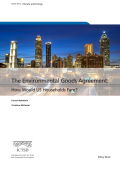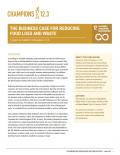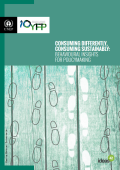
The Environmental Goods Agreement (EGA), initiated in 2014, is intended to reduce tariffs on a list of goods by the signatories, after which concessions will be extended to all WTO members based on the most-favoured-nation principle. While the main objective for reducing tariffs on environmental goods in an accelerated manner is environmental concerns, including the need to address climate change, it also makes good economic sense. Among the benefits are reduced consumer prices for environmental goods. Moreover, EGA tariff elimination can spur the uptake of energy efficient goods, in turn resulting in energy savings.
This paper looks into the case of possible consumer benefits of the EGA in the United States. The authors find that total household savings from the price effect of EGA tariffs cuts overall would amount to roughly $845 million per year, disproportionally benefitting lower-income households. Moreover, the paper estimates that an increased use of energy-efficient light bulbs could save 238 million kilowatt hours, which is equivalent to 124,000 tons of coal each year, or 120% of the greenhouse gas emissions from coal in the state of Maine.

According to available estimates, approximately one-third of all food produced in the world intended for human consumption is lost or wasted. This level of inefficiency in the global food system has significant economic, social, and environmental impacts. It amounts to economic losses of $940 billion per year. It means that more than a billion tonnes of food never gets consumed each year, while one in nine people remains undernourished. In addition, food loss and waste are responsible for an estimated 8 percent of annual greenhouse gas emissions; if it were a country, food loss and waste would be the third-largest emitter after China and the United States.

Human demands on Earth’s natural resources have outpaced what can be produced. A shift to more sustainable growth is dependent on changes in current patterns of both production and consumption. While recent policy has largely focused on addressing production and supply, consumption and demand must also be addressed. Today, in less than nine months, we consume more resources than our planet produces in a year, and our rate of consumption continues to grow.
The objective of this publication is to shed light on opportunities to strengthen the effectiveness of policies for sustainable consumption in both developed and developing countries. The publication provides evidence-based insights from behavioural science, detailing five key behavioural barriers to sustainable consumption. It also includes concrete examples of how behavioural science has been successfully coupled with policy to cost-effectively achieve sustainable consumption.
This document is a contribution to the OECD Project on "Behavioural Economics and Environmental Policy Design". It provides succinct, one-page summaries of the intervention studies analyzed to date, with an emphasis throughout on how the results are relevant for environmental policy. It also describes a potential framework for expanding this collection of examples into an online searchable inventory. It has been prepared by Laura Vong (formerly OECD Secretariat and Université de Nantes) and overseen by Zachary Brown (OECD Secretariat).

